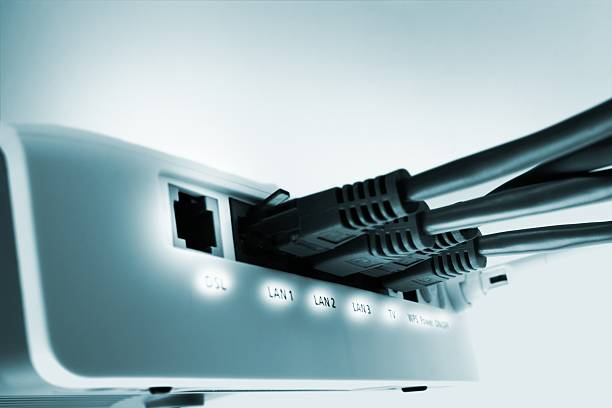7 Types of Internet Connectivity Solutions and Services

Connectivity Solutions: For young people, even a brief internet disconnection can feel like a heart attack. With so many activities relying on a stable connection, from remote work to streaming and running online businesses, it’s no wonder that internet downtime can be so frustrating. But now, there’s a wide range of connectivity solutions and services available to suit different needs, budgets, and lifestyles.
Let us help you learn the most common types of internet connections to help you find the perfect fit.
Kinds of Internet Connectivity Solutions and Services
1. Fiber Optic Internet
It is currently one of the fastest and most reliable connectivity solutions available. It uses fiber optic cables that transmit data at the speed of light without interruptions and thin glass or plastic cables that transmit data through light signals.
Fiber offers speeds of up to 1 Gbps or more, so gamers, streamers, businesses, and households with multiple users choose it. Although it provides excellent speed and stability, its availability is often limited to urban areas, and it may come at a higher cost.
2. DSL (Digital Subscriber Line)
DSL uses your phone line to provide internet, but it won’t interfere with phone calls. It’s one of the more affordable connectivity solutions and services. While DSL can provide speeds up to 100 Mbps, it usually performs best for basic activities like browsing, emails, and occasional streaming.
Sometimes, DSL can struggle with high-definition video or online gaming. It’s often a great fit for users in suburban areas, but as the distance from the provider’s central office increases, speeds may decline.
3. Cable Internet
It uses the same coaxial cables that deliver TV signals. It offers decent speeds and is widely available, especially in suburban and urban areas. It’s a reliable and widely available solution, especially in cities and suburbs, offering speeds ranging from 100 Mbps to 1 Gbps.
Many people prefer cable as a connectivity solutions and services because it balances speed and affordability. However, during peak hours, speeds may fluctuate due to network congestion. This is a great choice for everyday internet users who want consistent service with the option to bundle it with TV packages.
4. Satellite Internet
Satellite internet is the go-to solution for rural areas where other options are limited. It provides internet through signals transmitted between satellites and a dish installed at the user’s location. Satellite internet is accessible almost everywhere, but it tends to have higher latency and can be affected by weather conditions.
Speeds usually range between 25 to 100 Mbps, making it adequate for browsing and streaming. It may not offer the same performance as fiber or cable, but it is a good option for users without access to wired internet services.
5. Mobile Broadband (4G/5G)
This medium offers internet access through cellular networks and has become increasingly popular with the rollout of 5G technology. It is a flexible connectivity solutions and services that allows users to stay connected wherever there is network coverage. Speeds can vary depending on the network, with 5G delivering up to 1 Gbps, comparable to fiber optic internet.
Mobile broadband is a practical option for travelers, people working on the go, or temporary setups. Although it may come with data limits, signal strength can vary in remote areas. It is better suited for occasional use rather than heavy streaming.
6. Fixed Wireless Internet
It delivers internet via radio signals from a local tower to a receiver installed at your location. It is useful in rural areas where laying fiber or cable lines would be too expensive. Offering speeds between 25 and 100 Mbps, it supports browsing, video streaming, and other standard online activities.
Fixed wireless requires a clear line of sight between your receiver and the transmission tower, which can limit availability in hilly or forested areas. For users seeking reliable connectivity solutions and services without the need for cables, fixed wireless can be a solid option.
7. Dial-Up Internet
Though outdated, dial-up internet is still available in some extremely remote areas with no other options. It uses a phone line to connect to the internet, giving speeds of up to 56 Kbps, which is very slow by modern standards.
It can handle basic tasks like email and text-based browsing. It is inappropriate for streaming or other bandwidth-heavy activities. Dial-up’s low cost might appeal to those on a very tight budget, but for most users, it is considered one of the least practical solutions today.
Which One is the Best?
There’s no one-size-fits-all internet solution, but with so many connectivity solutions and services available, you’re sure to find one that suits your needs. Whether you’re streaming movies, running a business, or simply browsing, selecting the right service is essential for a seamless online experience.
If you are having trouble choosing the best for you, partner with Leadfoot Data Solutions and stay connected, productive, and entertained—no matter where you are!
